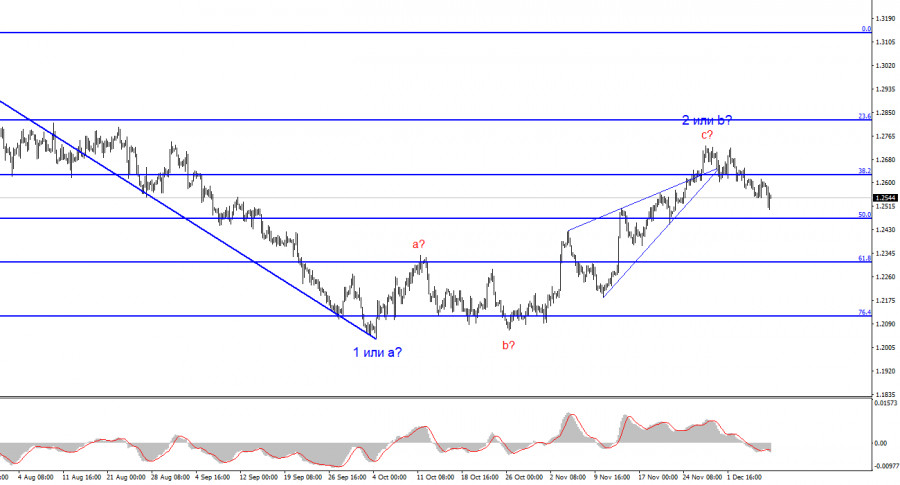

In the previous review, I concluded that the most important events of the upcoming week will be the U.S. inflation report on Tuesday and the FOMC meeting on Wednesday. The FOMC may announce a series of interesting statements that could influence the dollar's dynamics. The inflation report, released a day earlier, will directly impact these statements. What could Federal Reserve Chair Jerome Powell tell us, and how will it affect the dollar?

The first conclusion made by ANZ analysts is as follows: the dot plot for interest rates may be lowered by 50 basis points. What does this mean? The dot plot reflects the opinions of all FOMC members regarding interest rates for the next ten FOMC meetings. Currently, this forecast implies another rate hike to 5.75%. If the forecast is lowered, it means that the current rate level exceeds the forecast. Therefore, next year, it is almost certain that the Fed will begin easing monetary policy. This may happen earlier than many expect.
Forecasts for inflation may also be lowered, but the rhetoric of Powell will be crucial, not the new forecast. I believe that the victory over inflation is still far away, so the head of the Fed will not talk about policy easing next year. He will have to maintain a hawkish stance, but at the same time, a reduction in dot plot forecasts will work against the U.S. dollar. Which of these two events will be more important for the market? I believe it will be Powell's rhetoric. And since the probability of a shift towards a more dovish stance is extremely low, it should not change compared to his previous statements.
The inflation report will be crucial since it will be considered by FOMC members. Based on everything, I believe that the dollar will not lose momentum and will continue to strengthen against the euro and the pound. A pullback to the upside is certainly possible, within the assumed wave 3 or c, which should also be the construction of corrective wave 2. Therefore, a retreat from the achieved lows is possible, but further, I only expect declines in both instruments.
Based on the analysis, I conclude that a bearish wave pattern is still being formed. The pair has reached the targets around the 1.0463 mark, and the fact that the pair has yet to surpass this level indicates that the market is ready to build a corrective wave. It seems that the market has completed the formation of wave 2 or b, so in the near future I expect an impulsive descending wave 3 or c with a significant decline in the instrument. I still recommend selling with targets below the low of wave 1 or a. At the moment, wave 2 or b can be considered completed.

The wave pattern for the GBP/USD pair suggests a decline within the downtrend. The most that we can count on is a correction. At this time, I can recommend selling the instrument with targets below the 1.2068 mark because wave 2 or b will eventually end, and it could do so at any moment. The longer it takes, the stronger the fall. The narrowing triangle is a harbinger to the end of the movement.